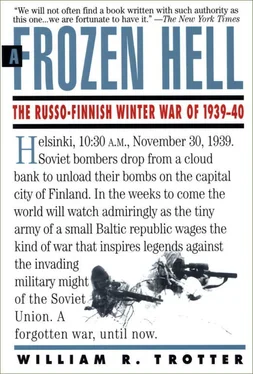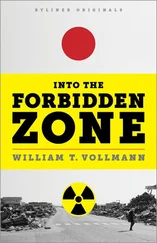William Trotter - A Frozen Hell
Здесь есть возможность читать онлайн «William Trotter - A Frozen Hell» весь текст электронной книги совершенно бесплатно (целиком полную версию без сокращений). В некоторых случаях можно слушать аудио, скачать через торрент в формате fb2 и присутствует краткое содержание. Город: Chapel Hill, Год выпуска: 2000, ISBN: 2000, Издательство: Algonquin Books of Chapel Hill, Жанр: military_history, История, на английском языке. Описание произведения, (предисловие) а так же отзывы посетителей доступны на портале библиотеки ЛибКат.
- Название:A Frozen Hell
- Автор:
- Издательство:Algonquin Books of Chapel Hill
- Жанр:
- Год:2000
- Город:Chapel Hill
- ISBN:978-1565122499
- Рейтинг книги:3 / 5. Голосов: 1
-
Избранное:Добавить в избранное
- Отзывы:
-
Ваша оценка:
- 60
- 1
- 2
- 3
- 4
- 5
A Frozen Hell: краткое содержание, описание и аннотация
Предлагаем к чтению аннотацию, описание, краткое содержание или предисловие (зависит от того, что написал сам автор книги «A Frozen Hell»). Если вы не нашли необходимую информацию о книге — напишите в комментариях, мы постараемся отыскать её.
A Frozen Hell — читать онлайн бесплатно полную книгу (весь текст) целиком
Ниже представлен текст книги, разбитый по страницам. Система сохранения места последней прочитанной страницы, позволяет с удобством читать онлайн бесплатно книгу «A Frozen Hell», без необходимости каждый раз заново искать на чём Вы остановились. Поставьте закладку, и сможете в любой момент перейти на страницу, на которой закончили чтение.
Интервал:
Закладка:
The Finnish civil war of 1918 was fought, by both sides, largely on an ad hoc basis, using whatever forces and equipment were available from week to week. The Finnish Army that emerged from that violent field was a motley agglomeration with no real personality of its own. Its units had fought with tactics and weapons borrowed from Russia one time, from Germany the next, and with an improvisatory dash of Finnish barroom savagery thrown in for good measure. Its officers were mainly veterans of the Prussian General Staff school of warfare, trained only to lead units in a large, complex, European-style standing army, complete with a full line of specialized services and support units. Their tactical training had presumed the “givens” of such an army, envisioning each unit as a component in vast 1918-style operations, which involved tens of thousands of men, hundreds of guns firing millions of stockpiled shells, each troop movement and tactic scheduled weeks in advance, the whole effort backed up by a modern industrial economy with all its ancillary networks of transportation and communications.
None of the above applied to Finland in 1918, and not much more by 1939. No matter how the new nation developed its resources, no matter how sound its economy was, no matter how its balance of trade improved, nature had still set rigorous, Spartan limits on what was possible in Finland. Its population would never be large enough to generate the manpower needed to field a massive European-style army, nor would its economy ever be rich enough to provide for the technological and logistical luxuries enjoyed by the armies of Britain, France, or America.
These conditions, far from daunting the architects of Finnish defense strategy, had an invigorating effect on their intellects. They were forced to throw out “the book” and find solutions to problems for which their professional training had not prepared them. Their task was rendered much more difficult by the parsimonious nature of the defense budgets they had to work with. In so far as it was a conscious process, their basic concept seems to have been to concentrate on the ways in which Finland’s geography and national character could be developed into military assets rather than liabilities.
Infantry training was stripped to its essentials. Officers and men worked together to develop tactical doctrine and training methods specifically adapted to Finnish terrain. The forest itself dictated a heavy emphasis on individual initiative and small-unit operations, quasi-guerrilla style. Marksmanship, mental agility, woodcraft, orienteering, camouflage, and physical conditioning were stressed, and parade-ground niceties were given short shrift. Unconventional tactics—ambushes, long-range patrols, deceptions, raids—were enshrined as doctrine and refined until they fitted into the overall national strategy.
The artillery branch concentrated its attention on mortars and howitzers, the kind of light, high-angle weapons that were best suited for the terrain. The gunners developed new techniques intended to compensate for the limitations the forest placed on range-finding and observation. Every part of Finland that might eventually become a target for Finnish gun crews was meticulously mapped and ranged, to the inch, from probable battery positions. The precision and economy of their fire-control procedures would give the ammunition-starved Finnish gunners a slight edge over their more lavishly equipped Russian counterparts when the shooting started.
Finland’s population was sufficient to permit a standing army of fifteen infantry divisions, each numbering 14,000 men. Because of prewar funding problems, however, there were only ten fully equipped divisions when war broke out. An eleventh division had been formed, but it had no heavy equipment; there was enough manpower on hand for two others if equipment could be found to outfit them.
Mannerheim’s mobilization scheme worked tolerably well, thanks to the advance warning the Finns had. There were some problems, however, because full-scale mobilization of entire divisions had almost never been allowed during peacetime. Officers suddenly found themselves commanding larger units than they were used to. Cadre officers who had led companies in peacetime (and who had usually known most of their men by name) were suddenly thrust into the role of battalion commander, while peacetime battalion commanders suddenly found themselves leading regiments. The duties of these new ranks had to be mastered on the job, and the remarkable success of so many Finnish captains and lieutenants in doing so is a testament to the soundness of their prewar training.
All those years of having to wring every ounce of value from every penny of the defense budget actually had some positive effects. The Finnish Army was “lean and mean,” experienced at getting the maximum effectiveness from its limited resources. Man for man, on its home ground, it was one of the toughest, best-led, most adaptable armies in the world. In spite of the scarcity of modern equipment, a spirit of calm confidence prevailed throughout the ranks. The men believed in themselves and their cause, and to an unusual degree they seem to have trusted their officers not to throw their lives away.
Geography dictated the basic Finnish strategy. The frontier with Russia was a thousand kilometers long, but the biggest stretch of it, from Lake Ladoga’s northern shore to the Arctic Ocean, was quite impenetrable except along a handful of unpaved roads. This fact alone helped to mitigate the Russians’ numerical advantage: it meant that the Finns could concentrate their strongest forces on the Karelian Isthmus and in the area immediately north of Ladoga, to prevent the outflanking of the Mannerheim Line.
In their prewar calculations the Finns had envisioned the deployment of seven Russian divisions on the Isthmus and no more than five along the whole border north of Lake Ladoga. If that had been the case, and given the conventional three-to-one ratio needed for an attacker to overcome a well-entrenched defender, then the simple numbers did not look all that disastrous for the Finns. Their main problem would be attrition over a long period of time, but there was always the hope that outside help would arrive before matters reached a crisis.
In reality, and from the very start, the situation was much grimmer. The war in Europe made the prospects of outside aid very dim indeed, and longterm attrition made eventual defeat a certainty. Finnish strategy was also undercut by the extensive preparatory work the Russians had done on their side of the border. Mannerheim had known about some of these construction projects, but many others had been carried out without the Finns catching on. Instead of the five divisions Finnish intelligence had predicted north of Lake Ladoga, the Russians deployed twelve. If Russian competence had been equal to Russian planning, the Finns would have been in serious trouble from the start.
At the beginning of the war, Mannerheim’s biggest problem was not men but matériel. Shipments of antitank and antiaircraft guns were arriving in small quantities and at a glacially slow pace. The ammunition situation was alarming. At the start of hostilities, Finnish stockpiles for some essential supplies were woefully inadequate: [4] Mannerheim, 324.
Cartridges for rifles and light automatics: 60 days
Shells for light fields guns: 21 days
Shells for 122 mm. howitzers: 24 days
Shells for heavy and coastal artillery: 19 days
Gas and oil for ground units: 60 days
Aviation fuel: 30 days
On paper, each Finnish division could count on the support of twenty-four field guns and a dozen howitzers. Even for an army trained to do without artillery support, those numbers were just barely adequate. In reality, many of the weapons were long overdue for retirement—museum pieces dating from the Russo-Japanese War of 1904–1905 were counted as well as modern cannon. Each division was also supported by two dozen 81 mm. mortars. Soviet artillery was not organic to a division; it was tacked on in regimentsized packets, usually two artillery regiments for each regiment of infantry, or about three times as many guns as the Finns could field.
Читать дальшеИнтервал:
Закладка:
Похожие книги на «A Frozen Hell»
Представляем Вашему вниманию похожие книги на «A Frozen Hell» списком для выбора. Мы отобрали схожую по названию и смыслу литературу в надежде предоставить читателям больше вариантов отыскать новые, интересные, ещё непрочитанные произведения.
Обсуждение, отзывы о книге «A Frozen Hell» и просто собственные мнения читателей. Оставьте ваши комментарии, напишите, что Вы думаете о произведении, его смысле или главных героях. Укажите что конкретно понравилось, а что нет, и почему Вы так считаете.












